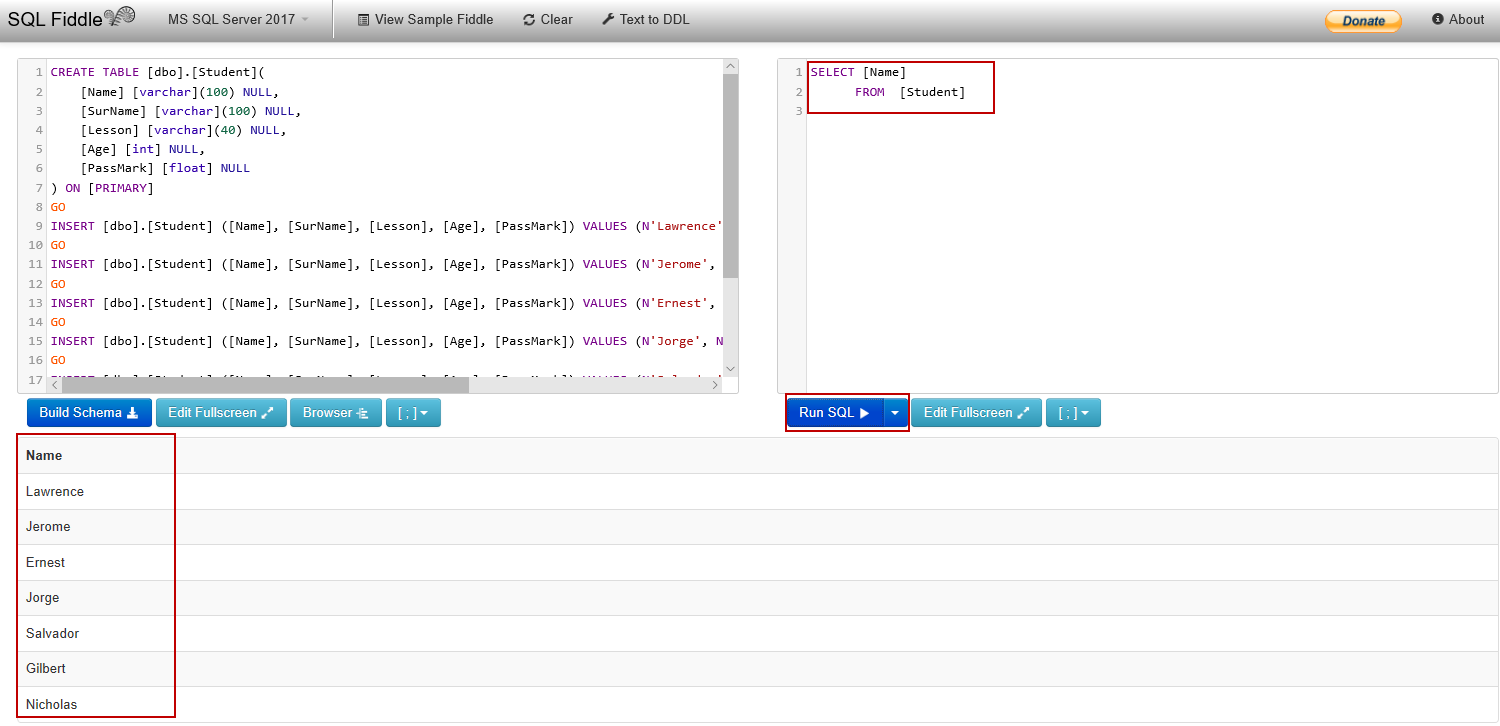
- #SQLITESTUDIO EXECUTE .SQL SCRIPT HOW TO#
- #SQLITESTUDIO EXECUTE .SQL SCRIPT CODE#
- #SQLITESTUDIO EXECUTE .SQL SCRIPT PASSWORD#
- #SQLITESTUDIO EXECUTE .SQL SCRIPT WINDOWS#
#SQLITESTUDIO EXECUTE .SQL SCRIPT HOW TO#
Learn how to use Beekeeper Studio with bite-sized articles. See a list of everything Beekeeper Studio has to offer Work across multiple devices, or share your connections and queries with others. Quickly iterate on a SQL query, view and visualize results, and share with a colleague.Ī spreadsheet like interface to view, navigate, search, and edit your data.Īn easy to use no-code interface to create and alter tables, indexes, foreign keys, and more. When the exit option is set the sqlcmd exits with an error message.How to create a database in SQLite | Beekeeper Studio Beekeeper Studio menuĮxperience a truly modern SQL editor that really sweats the details. With this sqlcmd command, an action can be set that will be performed when an error occurred. Other SQLCMD commands On error script keyword This sqlcmd command reads input from, in this example, from the User.sql file and loads it into the statement cache.

If this file already exists, the content from the previous session will be truncated. This file is automatically created and records all errors that appear during the execution of the code: Redirect all errors that occur during execution to the specified file name, in this case, this will be the Errors.txt file on this location C:\User\”. USE AdventureWorks2014 – – Set the database name :r $(Path)$(SQLFile) USE Test – – Set the database name :r $(Path)$(SQLFile) USE Test 1 – – Set the database name :r $(Path)$(SQLFile) USE – – Set the database name :r $(Path)$(SQLFile) Error script keyword :setvar SQLFile “User.sql” :setvar Error “Errors.txt” :setvar Path “C:\User\” – -specify the path of the error file :error $(Path)$(Error) Open a new query editor, switch to the SQLCMD mode (QuerySQLCMD Mode) and paste the following code: In the example below, it is shown how a user can be added on multiple databases.
#SQLITESTUDIO EXECUTE .SQL SCRIPT CODE#
SQLCMD is very useful when it needs to execute the same code on multiple databases or servers. To change the appearance of the results in the Data.txt file, go to Tools -> Options -> Query Results -> SQL Server -> Results to Text and from the Output format combo box, choose for example the Comma delimited option:Īfter executing the same T-SQL statement, the result will be: In this example, the results will be redirected to the Data.txt file: This command provides a location where the query results will be redirected. To include a password, use -P switch and enter a password: To include a username, add -U switch and then the name of a user.
#SQLITESTUDIO EXECUTE .SQL SCRIPT PASSWORD#
SQLCMD also allows specifying a username and password when connecting to an instance.
#SQLITESTUDIO EXECUTE .SQL SCRIPT WINDOWS#
If the instance is the default one, or if is specified by the server/instance name, then SQLCMD uses Windows authentication for connecting to SQL Server with a current account: This creates a connection to a SQL Server instance. Incorrect syntax was encountered while parsing :setvar. :connect ZIVKO\ZIVKO2014 :out C:\Users\Marko\Data.txt If two or more SQLCMD commands appear in one line: Only one SQLCMD command can be in each line. This is enabled because of backward compatibility with the osql utility. For a few SQLCMD commands, such as QUIT and EXIT though, a colon (:) can be omitted.įor example, the quit command will work the same as the command : quit. Most of the SQLCMD commands begin with a colon (:). The SQLCMD commands are automatically highlighted in gray and the T-SQL statements appear normal as it appears in the regular query. When executing the code, the result in the query editor will be: USE AdventureWorks2014 SELECT a.City, a.PostalCode FROM Person. :CONNECT ZIVKO\ZIVKO2014 :OUT C:\Users\Marko\Data.txt In the example below, some of the SQLCMD script keywords will be explained: In the SQLCMD mode, two types of statement can be entered: the first are the SQLCMD and second are T-SQL statements. When using SQLCMD mode the IntelliSense and Transact-SQL debugger are turned off in the Database Engine Query Editor. From the list, choose the Query Execution -> SQL Server -> General and check the “By default, open new queries in SQLCMD mode” checkbox:

To do that, go to the SSMS main menu and under the Tools menu choose the Options command: In SSMS, there is an option to set the query windows to be opened in the SQLCMD mode by default.

To enable SQLCMD mode, click the SQLCMD Mode option under the Query menu:Īnother way to enable the SQLCMD Mode is by using a combination of keys ALT+Q+M from the keyboard. To write or edit SQLCMD scripts in the query editor, the SQLCMD mode needs to be enabled. This article will explain some of the SQLCMD script keywords that the Database Engine Query Editor supports.

This option is available since SQL Server 2005. SQLCMD Mode allows creating, testing, executing SQLCMD commands or scripts in SQL Server Management Studio directly in the query editor.


 0 kommentar(er)
0 kommentar(er)
